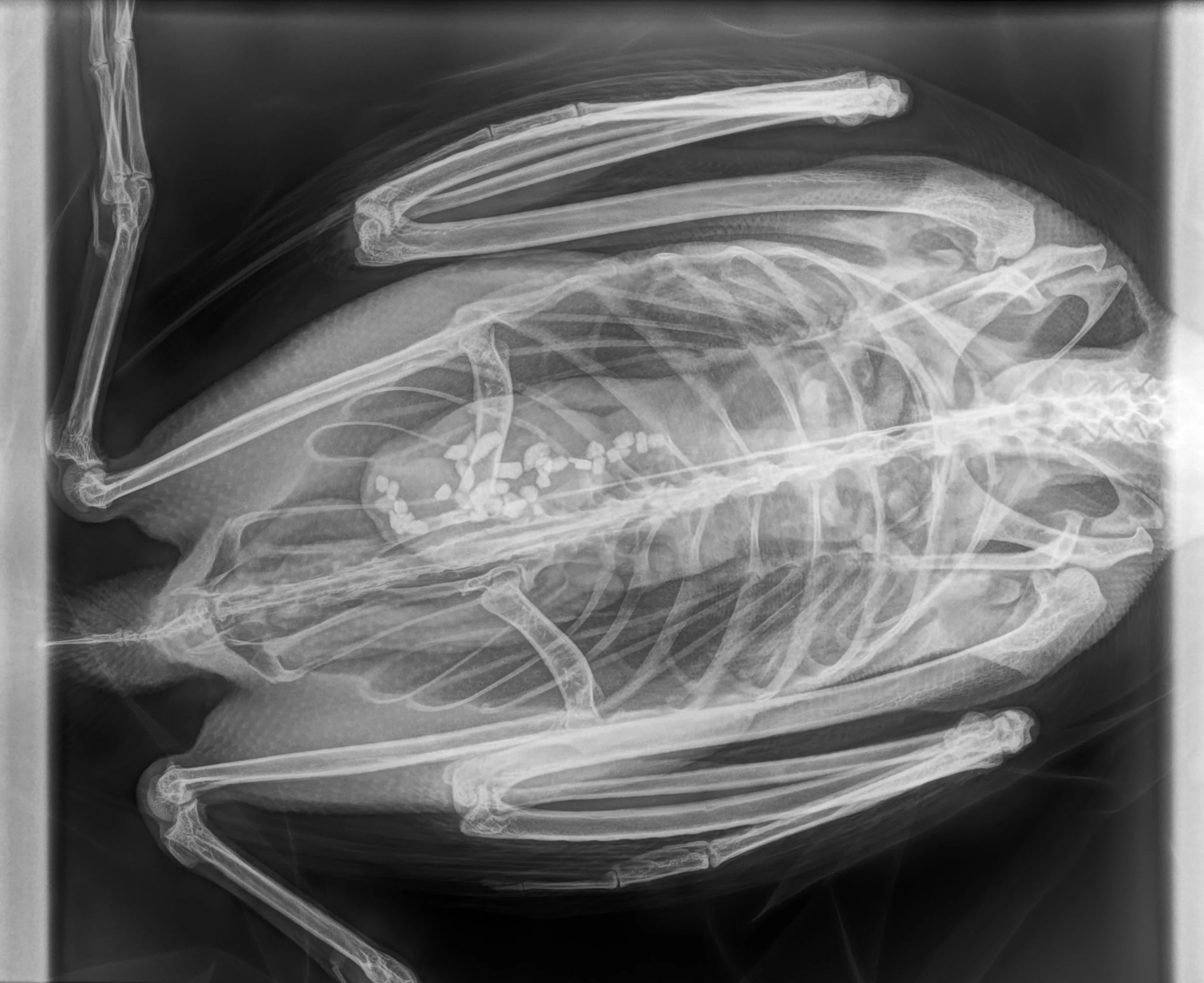Grounded Loon Rescue in Boonville, NY
Words by Leah Boget, ACLC Wildlife Technician
On the morning of Wednesday, September 2nd, Michael Sanders called the Adirondack Center for Loon Conservation (ACLC) to report a mysterious case of a grounded loon.
The loon was found in a gravel lot of the National Grid’s construction yard in Boonville, NY, far from any open bodies of water. Far from lakes and ponds, the loon most likely landed in this lot by mistake. Mistaken landings from flight typically occur during storms or rainy weather, due to either gusts of wind blowing loons out of the sky or wet pavement shining like open water. In this case, there had been no storms—or any major rainfall—for days, so these weren’t likely options. Alternatively, a loon may become exhausted while flying and crash-land on the ground—a fate they can survive surprisingly well. The prevailing theory for this loon was that a cold morning caused fog to form over the clear construction lot, appearing from above like a misty open surface, perfect for landing.
No matter how this grounding occurred, though, the lot had not been visited since Friday the 29th, so the loon’s health could easily be in peril. While volunteers rushed to the site, Michael and coworkers covered the loon in a plastic kid’s pool and got it into the shade. Loons can only thermoregulate by “heat-dumping” into water through their feet, and a small bit by panting, so overheating is one of the biggest risks to grounded loons, especially in the open contractor’s lot.
Gary Lee, one of ACLC’s most experienced rescue volunteers, arrived at the scene and found the loon in seemingly good health, as it was alert and active. It seems it couldn’t have been grounded for long. Despite its energy, Gary was able to quickly net the stranded loon and get it into a capture bin. Capture bins are specially designed with netting across the lower third to hold a loon and keep it from putting weight on its fragile keel. They also have air holes and slots to put wet towels underneath the loon to keep it cool. Gary transported the loon to Long Lake, where he handed it off to Griffin Archambault, ACLC’s research biologist. Griffin in turn brought the loon back to Saranac Lake, where it was kept overnight before taking a trip to Dr. Bentley at Paws and Claws mobile vet.
An x-ray of the rescued loon by Dr. Bentley of Paws and Claws Mobile Vet showed a healthy loon.
Surprisingly, after a general physical exam and radiographing for broken bones, the loon was given a clean bill of health on all accounts—no lead in its gizzard to cause illogical groundings, no depletion of body fat to indicate crash-landing from exhaustion, and no broken bones from the fall.
Now confident in the loon’s health, it could be banded and released. Every eligible rescued loon receives a silver USGS band and a unique combination of three colored bands, with two bands per leg. This allows for resighting individual loons, giving ACLC and other conservation organizations insight into their reproductive efforts and migration habits.
Because this loon was found in Boonville, far from any open bodies of water, it was decided to release it onto Second Pond in Saranac Lake. Second Pond had a resident pair earlier this year, but they didn’t hatch any chicks and decided to leave for larger lakes for the rest of the season. This often occurs with chick-less pairs on small lakes, both to socialize and hunt with groups and to preserve the smaller stocks of fish in their resident territories for future years. Without a current resident pair, our rescued loon wasn’t likely to face a fight in Second Pond, which also connects to First Pond and flows into Lower Saranac Lake. These characteristics meant the loon would have plenty of room to rest, feed, and eventually take off for wherever it may wish to go.
While this loon might have been a resident of a pond elsewhere in the Adirondacks this year, it might spend the fall in the area before migrating to the coast in the winter. In the spring, it will likely return to its usual stomping grounds, a little more worldly than before. We look forward to seeing if there are any reports of this loon from its unique band combination, which would tell us where this loon came from and that it’s doing all right!
This loon was safely released into Second Pond with high hopes for its future, thanks to the efforts of the public like Michael Sanders and his National Grid coworkers, volunteers like Gary Lee, and the generous time and skills of Dr. Bentley.
This instance is a great reminder that a loon on the ground is always a loon in distress. If you see a grounded and otherwise distressed loon, please call the Adirondack Loon Center at 518-354-8636 or email rescue@adkloon.org. Be prepared to share your name, location of the loon, description of the loon’s condition or behavior, and any photographs or video you are able to capture to help ACLC staff assess the situation.

